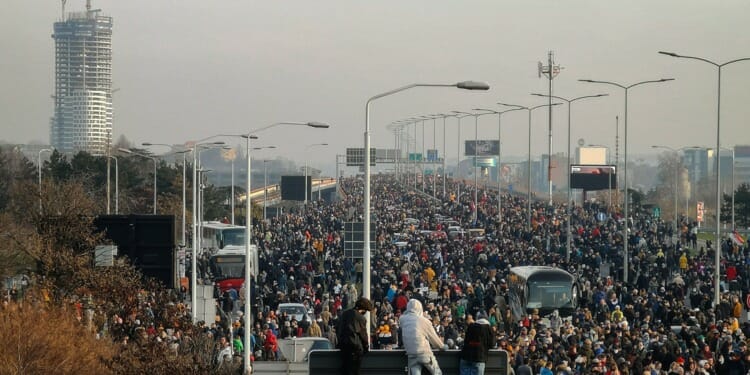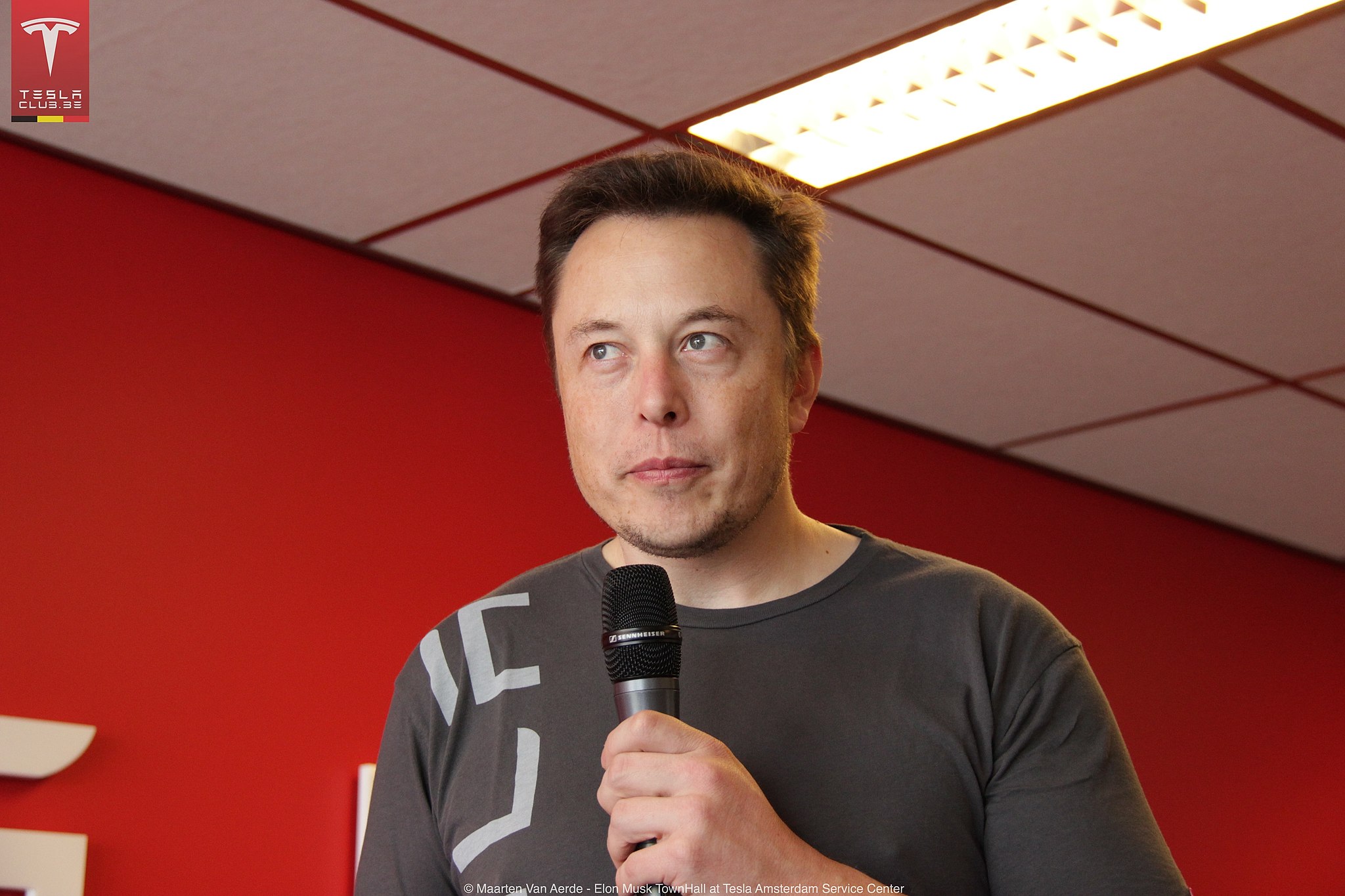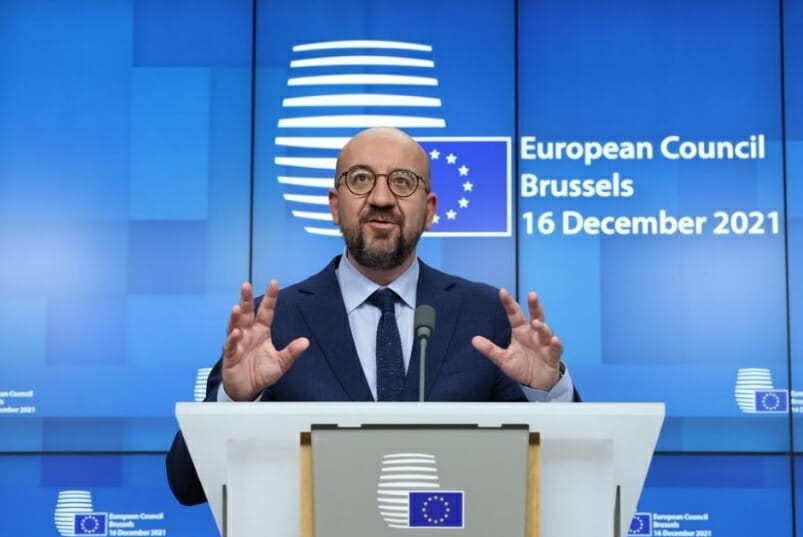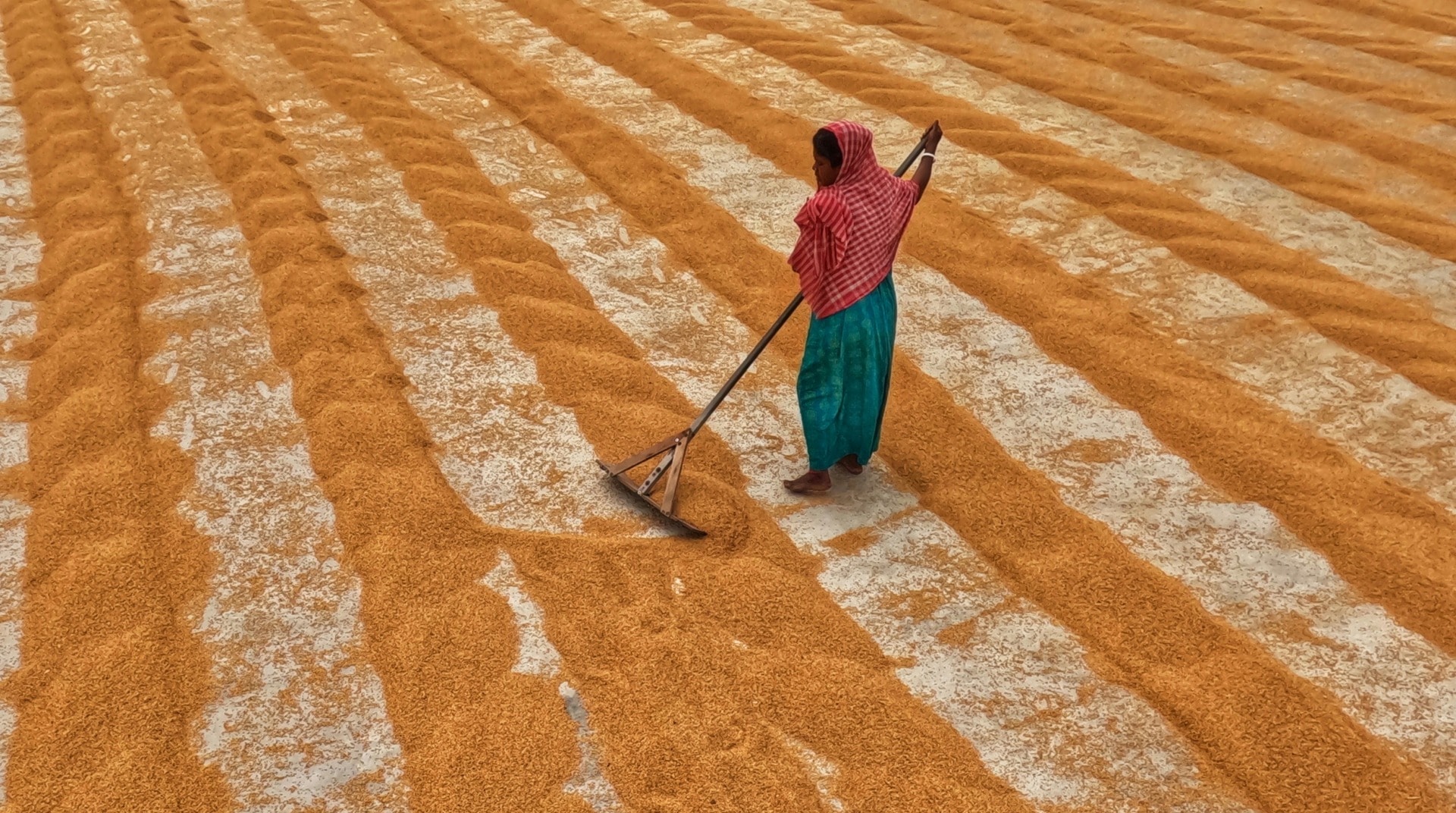For four consecutive weekends, protests have been sweeping Serbia, spurred by plans for multinational mining group Rio Tinto to begin operations in the Jadar valley. The project, which plans to turn the region into Europe’s largest lithium mine, is expected to have disastrous environmental impacts.
It will result in the displacement of 81 households, and involve the purchase of the 293 fields from landowners. Many of the homes have already been purchased, with the owners ripping out the windows and roofs of their homes, knowing that the buildings are to be destroyed if Rio Tinto’s plans go ahead.
Ovako izgleda kraj u dolini Jadra gdje je planiran rudnik Jadarita. U kuće kao da je ušao Arkan sa svojim pljačkašima, a u stvari su vlasnici prodali #RioTinto i pokupili sve što vrijedi. Da ne propadne što bi se i desilo. #jadar #loznica #srbija pic.twitter.com/P0zhxTW3KE
— ꧁𓊈𒆜🅺🆄🅿🅴🅺 🅴🅵🅴🅽🅳🅸🅹🅰𒆜𓊉꧂ (@K_U_P_E_K) August 11, 2021
There are also plans for a Chinese mining company, Zijin, to install a copper mine and extract further resources.
The protests have successfully pressured local authorities in Western Serbia, specifically the Loznica town council, to suspend the planned mining operations.
The demonstrations on the third weekend, held on the 11th and 12th of December, were much smaller than those of the previous weekends, although still held across 50 locations. This was largely due to the withdrawal of one of the largest contributing movements, Kreni Promeni, withdrawing after its two demands regarding the withdrawal of controversial laws were met.
The protests, which have now become the largest Serbia has seen since 2019, followed protests earlier this year in April, in Belgrade, where thousands protested the country’s rampant pollution. A 2019 WHO study revealed that Serbia has Europe’s highest death rate resulting from air pollution. The quality of drinking water has also been brought into question, with WHO determining that “one third of rural water systems inspected in Serbia did not meet standards for microbiological drinking-water quality.”
Rio Tinto, amongst other environmental catastrophes in its shocking history, has previously been responsible for poisoning water supplies, and has a habit of subsequently denying responsibility. The company still refuses to accept its role in the pollution of waterways in Southern Madagascar with uranium amongst other contaminants, which activists allege is a result of the activities of QMM, a Rio Tinto subsidiary.
A mine abandoned in Papua New Guinea is also believed to have leaked tonnes of poisonous waste into Bougainville’s rivers, leaving the 12,000-14,000 people currently living downstream of the Jaba-Kawerong valley with unsafe drinking water. The company was accused of selling its stake in mine towards the end of its life to deliberately avoid clean-up costs.
Recently, a concerted effort of locals, who banded together to file a legal claim against Rio Tinto, eventually prompted the company to co-fund a study into the local effect of the Papua New Guinea mine, although not committing to clean up costs.
In another display of indifference to the contamination and consumption of water supplies, Rio Tinto is planning on co-building a copper mine in Arizona, USA, which would deplete water in an area already susceptible to droughts. It will also possibly permanently affect the water quality of the local area.
Rio Tinto’s plans in Serbia will devastate the Jadar valley, irreversibly poisoning water
Rio Tinto’s history and lack of accountability gives citizens of Serbia, and indeed citizens across Europe, a lot to be concerned about. Activists say that the project will pollute the land and water, a claim backed up by a study funded by Rio Tinto itself, which shows that the project will devastate the ecosystem of the Jadar valley.
The plans would, according to environmentalists, irreversibly poison drinking water supplies in a country already struggling with water hygiene issues.
According to the Guardian, the mine is expected to generate 57 million tonnes of waste over the course of its life, and is expected to use up 6-18 litres of water per second. Prof Dragana Đorđević, head of the environmental chemistry and engineering department at Belgrade university, also told the Guardian that: “The basins of the Drina and Sava rivers, from which about 2.5 million people are supplied with water, are endangered.”
The were met with aggression from state backed actors, but generated strong momentum and won public support
The protests have, in recent weeks, evolved into one of Serbia’s most galvanizing social movements in recent years.
The protests held on the weekend of December 4 were the largest of four demonstrations thus far, with thousands assembling in around 50 locations across the country, blocking roads and bridges, to demand an end to the proposed plans.
The protests followed smaller, similar protests the previous Saturday, on November 27. The earlier demonstration came after the refusal of the state run news channel, RTS, to air a commercial countering the claims of Rio Tinto. RTS had previously aired a widely rebuked commercial from Rio Tinto, the unbelievable claims of which had appalled much of the Serbian public.
This echoed a similar demonstration in 2018 held against RTS, who have long been accused of facilitating government misinformation, acting as a mouthpiece for the regime.
The protesters on the 27th were largely peaceful, until significant provocation from the authorities, who in some places used force to move citizens off the roads. In one town, Sabac, police disappeared and masked men, widely identified by the residents as local soccer hooligans, attacked the protesters with sticks and hammers.
The tweet below contains an image of police violence against protesters, on the 27th.
Junačina koja bije žene je Aleksandar Krstić, komandir policijske stanice Savski venac.
Uzdanica Milića i njegovog pomoćnika Vladana Radosavljevića, bivšeg načelnika PS Stari grad. pic.twitter.com/GmN27hGZsg
— Nikola Lakic (@NikolaLaki3) November 27, 2021
Video footage has emerged showing the hooligans being escorted to the rallies in government cars, one of the cars bearing the same number plate as the car belonging to the mayor of Sabac.
The hooligans had been given access to an excavator, which was driven into the crowd, apparently with the aim of dispersing it. With the police reportedly still absent, a local citizen attempted to halt the excavator and protect the crowd; he climbed on the vehicle and a struggle ensued between him and a hooligan who sought to protect the driver. This led to the local citizen’s eventual arrest.
Hooligans in Sabac driving dangerous vehicles on the 27th are captured in the footage contained in the tweet below.
https://twitter.com/EkoStraza/status/1464623006567776259?s=20
Similar attempts to antagonize protesters were reported on December 4, however these attempts were largely unsuccessful, with the hooligans being overwhelmed by the much larger numbers of protestors.
The footage in the tweets below show protesters on the 4th chasing away hooligans attempting to antagonise them.
Tuča u Novom Sadu na protestu. pic.twitter.com/7LUvXfyfZD
— Maja Dragić 🍓 (@kuvanikukuruz) December 4, 2021
The weaponization of gangs against protesters is a long acknowledged tactic of the Serbian regime. A New York times article published earlier this year, covering the arrest of the leader of a violent and murderous group, detailed some of the terror inflicted by soccer hooligans.
According to the New York Times, the man arrested reportedly had close ties to the government and security forces. Mirko Poledica, retired footballer and president of the country’s soccer player association, told the publication that Serbia’s “soccer hooligans are controlled by the state,” and have long been used to break up protests and rallies.
Serbia's autocratic regime has its own version of brownshirts. Today these thugs attacked environmental protesters in the city of Sabac.
Any sign of dissent in Serbia, no matter how small, is crushed with an iron fist. pic.twitter.com/V6qh17HCPu
— Admirim (@admirim) November 27, 2021
Eco activist Aleksandar Jovanović Ćuta called for police to be present for the third weekend’s protests, in order to protect the crowd and arrest anyone attacking them. This would be a change of pace, considering that police were absent for much of last week’s protests, and had arrested multiple protesters on the 27th whilst ignoring the masked aggressors.
What are the protesters’ aims, and who are the main groups involved?
Until December 4, protestors specifically wanted the withdrawal of two controversial laws. One was an expropriation law, which allowed the government to take possession of privately owned land within eight days. The other law was a law imposing considerable administrative fees on referendum proposals, which would hamper activist efforts.
These laws were withdrawn weeks ago, the government perhaps fearing plummeting support ahead of the next election, and also seeking to avoid further protests, which they have been unsuccessful in quelling through other means.
Related articles: What I Wish the World Knew About Why Serbia Is Protesting | Enough Bloody Shirts
Several groups have emerged as leaders within the protest. Savo Manojlović, whose group Kreni Promeni created the anti Rio Tinto commercial that RTS refused to air and organized the first in this series of protests on November 19, has focused on a more gradual, step-by-step approach to the situation, focusing on smaller specific demands.
Manojlovic promised that he would back down from the demonstrations, but not the greater environmental struggle, following the government’s acceptance of his demands: the withdrawal of new laws that aimed to support Rio Tinto’s mining plans, and hinder opposition. With the retraction of the laws, Kreni Promeni duly stepped back.
Other groups, however, have called for more drastic measures, making demands that many consider unlikely to be met, risking derailment of the protests. These groups are calling for a complete ban on drilling in the Jadar region, and the replacement of the regulatory media body.
The second aim is significant, given that sections of the Serbian media have been accused of deliberately vilifying protesters, pandering to government rhetoric seeking to paint the demonstrations as dangerous, ill-informed and anti-progress. The regulatory media body currently consists entirely of figures appointed by the government.
The new demands, which emerged the Sunday following the protest on December 4, were backed by three main proponents: Eco activist Aleksandar Jovanović Ćuta; a citizen’s movement called “Ne davimo Beograd”; and Nebojsa Zelenovic, president of the party “Zajedno za Srbiju.”
Others have expressed concern that these demands play into the hands of the government, making the protest seem entirely unreasonable. The withdrawal of the two laws above however, means focus has now turned to determining what the next steps should be, and what further should be demanded, whilst the public protests still have momentum.
However, the fact that numbers were fewer at the protest on December 11, possibly indicates that for many, the current struggle should subside, and efforts should refocus on new strategies. Nikola Krstic, from another one of the main groups involved in the protests, Fortress Movement (Pokret Tvrdava), expressed this view to the Financial Times. He said that whilst the “blockades are over,” a “new method to fight” will be sought.
Others, like Aleksandar Jovanović Ćuta, would rather not let the protests subside, declaring that “There will be no peace until exploitation of lithium is banned and Rio Tinto sent away from Serbia.”
Kreni-Promeni has deemed the progress made thus far a success, posting the following to their facebook page: “This is the first victory of the citizens since 2012! We’ll keep moving on! This is a win for all of us.” They also announced that they have decided to shift attention towards the collection of signatures, petitioning a total ban on lithium mining.
The formation of a Rio Tinto working group in November suggests that the mining company has garnered backing from major industry figures
The Serbian government, last November, formed a Rio Tinto working group. Among the members of the group are President Aleksandar Vučić’s allies, one being the Minister of Construction, Transport and infrastructure, Zorana Mihajlović. Ivica Kojić, the chief of the President’s cabinet, and the President’s advisor Danilo Cicmil were also included.
There was also international representation, with the inclusion of the second secretary of the Australian Embassy in Belgrade, and the World Bank’s Country Manager for Serbia, Stephen Ndegwa.
Key figures central to Serbia’s infrastructure were also present, with the inclusion of representatives from the main public companies: Srbijagas (a gas provider); Puteva Srbije (Road of Serbia, Serbia’s national road construction company); EPS-a (electricity/power provider); Srbijavoda (water supplier); Srbijašuma (a Serbian national forest company); and Železnica (a railway company).
The inclusion of all the above has raised concerns amongst Serbians, in that it provides Rio Tinto access to the companies that most of the population rely on for essential services and basic utilities. Not only would access to these resources facilitate Rio Tinto’s proposed exploitation, it may also pit the entire utilities industry against civilians opposing the plans.
In fact, three citizen’s movements, Podrinjski anti korupcijski tim (PAKT), Koalicija protiv korupcije u životnoj sredini (coalition against corruption in environment) and Ne damo Jadar (Let’s not drown Jadar), have revealed a document evidencing this facilitation.
The document reveals that Putevi Srbije, the country’s national road construction company mentioned above, signed a document, which gave Rio Sava Exploration, one of Rio Tinto’s daughter companies, authority over an important public road in the Jadar region. Putevi Srbije is run by an ally of Vucic.
Protesters propose different strategies to best respond to the upcoming referendum, given the untrustworthy nature of Serbia’s democratic processes
The government has set a date for the Rio Tinto referendum, January 16th. The referendum falls on the third anniversary of the assassination of an opposition politician, whose murderers have never been caught. This, among other things, motivated Serbia’s last major series of protests in 2018/19. The protests began by rallying under the slogan: “Enough Bloody Shirts.”
The question of attendance for the upcoming referendum is much debated amongst protesters. Those who encourage a boycott of the referendum point to the likelihood of the ruling party flooding the ballots with paid or otherwise coerced votes, rigging an election whilst giving the illusion of having facilitated the public’s choice.
Some have suggested that a massive demonstration should be held on the day, rather than aid the government in imbuing its plans with a false sense of legitimacy. Aleksandar Jovanovic Cuta, the eco-activist mentioned earlier, has suggested a protest vote, encouraging people to write “Rio Tinto, out of Serbia!” on the ballot sheets.
The Response from the EU
Serbia is currently in the process of seeking membership of the EU. In order to achieve this, Serbia must initiate negotiations with EU member states covering 35 policy areas, 22 of which it has already discussed.
This week, it began “cluster 4” negotiations, “Green Agenda and Sustainable Connectivity.” The talks cover amongst other things, energy, environment and climate change.
Commissioner Olivér Várhelyi made clear that emphasis is to be placed on Serbia’s “rule of law,” and normalisation of relations with Kosovo.
MEP Tonino Picula, a Croatian politician and member of the Socialist and Democrats Party (a party within the European parliament), has described it as “an irony” that negotiations with Serbia regarding environmental issues have coincided with the current protests against government measures “which would dangerously endanger the environment and damage the health of citizens.”
The European parliament has criticised Chinese influence in the West Balkans, passing in recent days a resolution expressing as much. In the resolution, members condemned the “slave labour” that Chinese-owned companies, unobstructed by the government, have been subjecting workers to, particularly migrants brought from Vietnam and made to work in sub-standard and dangerous factories.
The government’s inability to regulate or challenge the exploitative practices of these Chinese companies suggests that companies like Rio Tinto will not have to worry about being held accountable for substandard practices if they are allowed to operate.
Despite the EU’s environmental goals, and previous calls on Serbia to reduce its carbon emissions, EU leaders so far have been silent and have not issued the kind of strong condemnation of the proposed Rio Tinto project that one would expect.
Angela Merkel, who until very recently was the German head of state, and a very influential figure in the EU, had previously commented that Germany was interested in the lithium mines. Both Merkel and Ursula von der Leyen, President of the European Commision, have suggested that the mines would present a good economic opportunity for Serbia.
Asked about the lithium mines in a press conference with Vucic in September, Merkel said that “If the whole world is interested, we are also interested and that is clear,” going on to mention that Germany has “a large number of investments in the automotive industry, including in Serbia, and we all know how important lithium is for future mobility and battery cells.”
In fact, the Guardian reported that talks had begun to supply key German car manufacturers with lithium, who currently receive their entire lithium supply from outside the EU. If Serbia is to become a member state, and the Rio Tinto plans go ahead, Germany’s car industry would likely greatly benefit from cheaper and easier access to lithium.
Inspiring future change
Serbia’s protests have demonstrated not only a commitment to the country’s environmental health, but a growing animosity towards the current President, Aleksandar Vučić. The ruling party’s authoritarian regime, whose manipulative and violent tactics failed to suppress the organised display of dissent, have shown themselves to be vulnerable to collective public action.
Whilst Vučić may not be replaced at the next election, given the weakness of the opposition, the demonstrations may have sparked confidence in the ability of citizens to affect change at a systematic level, taking Serbia closer towards the installation of a more responsive and representative government.
Editor’s Note: The opinions expressed here by Impakter.com contributors are their own, not those of Impakter.com. — In the Featured Photo: Protesters gathering to block roads and demand change in Serbia. Featured Photo Credit: Marko Risović / Kamerades. See more of the photographer’s work on his instagram page.














